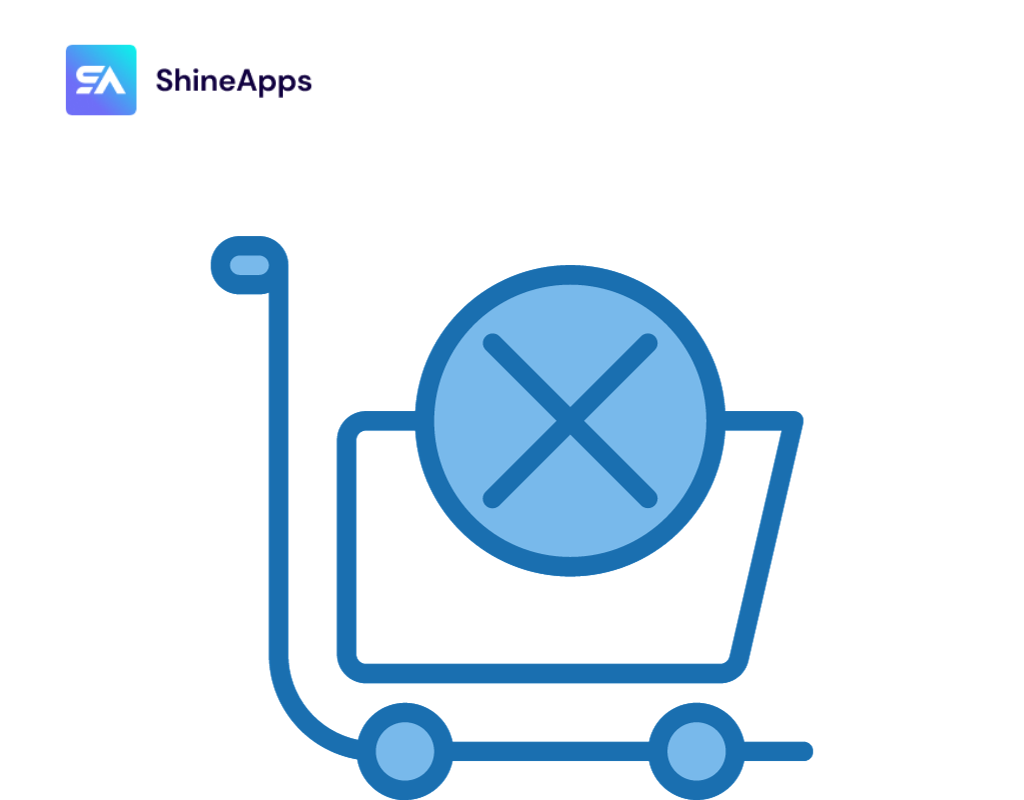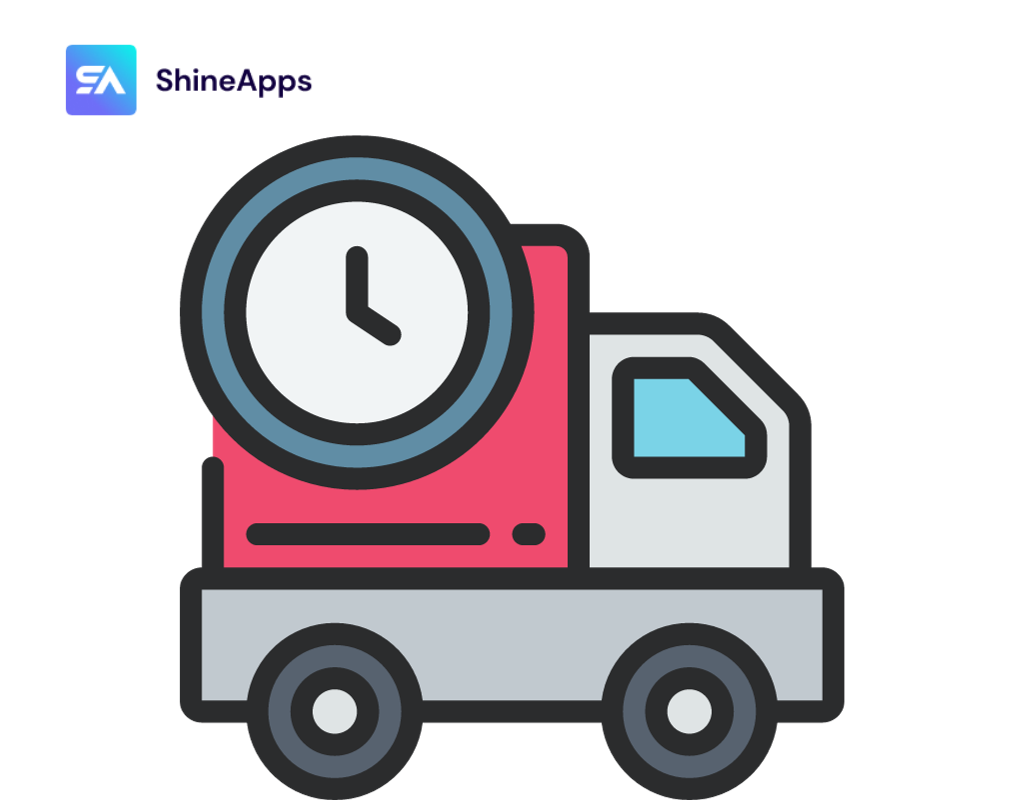Are you truly exploiting the potential of your eCommerce business data? In the rapidly evolving world of online retail, data-driven decision-making is the key to success. To help you make informed decisions and maximize your eCommerce success, we’ve compiled a list of the 15 most important eCommerce reports to act upon.
15 Best Important eCommerce Reports To Take Action
Understanding your customers’ behavior, tracking sales trends, and optimizing your online store is critical to staying competitive. From sales analytics to customer behavior insights, these eCommerce reports will guide you in optimizing your online store and enhancing your bottom line. Let’s dive in!
1. Conversion Report

This crucial report tracks the percentage of visitors to your eCommerce site who make a purchase. It’s a vital metric because it directly reflects how successful your website is at converting casual visitors into paying customers.
If your conversion rate is low, it’s a sign that something may be amiss. It could be time to reevaluate your website’s design, user experience, or even your marketing strategies to improve this critical metric.
2. Traffic Sources
Understanding where your website traffic originates is fundamental to optimizing your marketing efforts. The Traffic Sources Report identifies the channels driving visitors to your site, whether it’s organic search, paid advertising, social media, or referrals.
This data helps you assess which marketing campaigns are effective and which ones may need adjustment or discontinuation. It can also reveal opportunities for potential partnerships with other websites to further boost your online presence.
3. Customer Spending/Frequency

One of the essential eCommerce Reports, the Customer Spending/Frequency Report provides insights into customer behavior by showcasing how much, on average, your customers are spending and how often they’re making purchases.
Armed with this information, you can devise strategies to encourage customers to increase their spending or make more frequent purchases. For example, you might consider offering discounts for larger purchases or providing free shipping with every order to incentivize higher spending and loyalty.
4. ROPO Analysis Report
Research Online, Purchase Offline (ROPO) analysis has become increasingly significant in eCommerce. This report helps you determine if your online advertising campaigns are cost-effective and whether your online presence, product details, and reviews influence in-store purchases. Understanding the relationship between online research and offline buying can inform your marketing strategies and enhance your overall business strategy.
5. Sales Reports

Sales reports are a treasure trove of information about your eCommerce business. These eCommerce reports offer insights into sales trends, product performance, and customer buying habits. You can segment sales data by various criteria, such as time, product, SKU, vendor, and even point-of-sale location.
This data can help you identify seasonal sales trends, evaluate the success of marketing campaigns, and inform future product promotions. It’s a vital tool for strategic decision-making.
6. Online Store Cart Analysis
Monitoring customer interactions with items in their shopping carts can be incredibly valuable. This report reveals patterns and tendencies in what customers add to their carts. It’s a source of inspiration for upselling, bundling, and designing new marketing campaigns based on frequently paired products. This data goes beyond the obvious and can provide unique insights into creative sales strategies to increase your average order value (AOV).
7. Month-End Inventory Snapshot

A month-end inventory snapshot shows the quantity of stock you had for each product variant at the end of the month. This data is indispensable for monitoring inventory performance and sales. You can track changes in stock levels, assess sales performance by variant, and make informed decisions about restocking or discontinuing specific products.
8. Product Sell-Through Rate
Another important one on the list of eCommerce Reports, the Product Sell-Through Rate is a straightforward yet essential metric. It measures the percentage of your total inventory sold during a specific period. A higher sell-through rate indicates efficient inventory turnover.
By calculating this rate, you can understand how well your products are performing in terms of sales and inventory management. It’s a key indicator of your store’s overall health and can influence decisions about restocking, promotions, and product selection.
9. Cart Abandonment Report

Shopping cart abandonment can be a formidable challenge for eCommerce businesses. This report provides invaluable insights into users who add products to their carts but, for some reason, fail to complete the purchase.
Identifying the common reasons behind cart abandonment, such as unexpected shipping costs, complicated checkout processes, or technical issues, is paramount. Armed with this data, you can develop targeted strategies to recover potentially lost sales.
10. Customer Acquisition Cost (CAC) Report
Acquiring new customers comes at a cost, and understanding that cost is crucial for effective budgeting and marketing efforts. The CAC report calculates the Customer Acquisition Cost by dividing your total marketing expenses by the number of new customers acquired during a specific period.
This metric helps you gauge the efficiency of your marketing campaigns and ensures that your customer acquisition efforts align with your budget. Knowing how much you’re spending to acquire each new customer enables you to make informed decisions about the allocation of resources and marketing strategies.
11. Customer Retention Rate Report

Repeat customers are often the lifeblood of an eCommerce business. They tend to spend more and are more likely to make frequent purchases. The Customer Retention Rate Report measures customer loyalty by tracking how many customers return to make additional purchases.
Analyzing this data helps you assess the effectiveness of your customer retention strategies. High retention rates indicate satisfied customers and successful retention efforts, while declining rates may signal the need to revisit your strategies. Don’t forget this one when you check eCommerce reports.
12. Inventory Management Report
Maintaining optimal inventory levels is a delicate balancing act in eCommerce. Overstocking ties up capital and storage space, while running out of popular products leads to lost sales and dissatisfied customers.
The Inventory Management Report is your tool for ensuring you have the right products in stock at the right time. By monitoring stock levels and sales trends, you can make informed decisions about restocking, discontinuing low-performing products, and optimizing your supply chain.
13. Customer Feedback and Reviews Report

Customer feedback and reviews are a goldmine of insights for eCommerce businesses and one of the crucial eCommerce reports. Analyzing this data allows you to understand your customers’ experiences, preferences, and pain points.
Positive reviews can highlight your strengths and serve as powerful testimonials, while negative feedback reveals areas for improvement. Promptly addressing customer concerns and making improvements based on their feedback demonstrates your commitment to customer satisfaction.
14. Mobile Performance Report
With the increasing prevalence of mobile shopping, your website’s mobile performance is paramount. This report helps you monitor the user experience on mobile devices. Ensuring that your website is mobile-responsive, loads quickly, and provides a seamless shopping experience is essential.
Mobile performance directly impacts customer satisfaction and can significantly influence conversion rates. A mobile-friendly website not only attracts more mobile shoppers but also ensures that they complete their purchases smoothly.
15. Fulfillment, shipping, and delivery times

The Fulfillment, Shipping, and Delivery Times Report is crucial for ensuring customer satisfaction. It tracks the time it takes for orders to be processed, shipped, and delivered. This report provides insights into which parts of the process meet customer expectations and which fall short.
For instance, it reveals how quickly orders are fulfilled or how efficiently products reach their destinations. Monitoring this report helps identify and address potential delays and customer service issues in the order-to-delivery process, ensuring a smoother customer experience.
Tips For Analyzing Ecommerce Data

Analyzing eCommerce data is crucial for making informed decisions, optimizing your online store, and increasing sales. Here are some tips to help you effectively analyze eCommerce data:
- Consistency is Key: Maintain consistency in the metrics and Key Performance Indicators (KPIs) you evaluate. Use gross sales, net sales, or total sales as benchmarks to monitor changes over time. This consistency helps in tracking your store’s performance effectively.
- Checkout Funnel Analysis: Monitor your online store’s conversion rate and conversion funnel. Analyzing the checkout funnel helps identify drop-off points and barriers to conversion. Addressing these issues, such as high shipping costs, can improve customer trust and reduce cart abandonment.
- Zero Results in Search: Utilize a “top online store searches with no results” report to identify potential missed sales opportunities. If you notice many unmatched searches, consider implementing a smart search tool on your site. Insights from search behavior can also inform product naming and PPC campaigns.
- Segment Your Data: Break down your data into segments to gain deeper insights. Segment by demographics, geographic location, purchase history, and more to identify trends and target specific customer groups.
- Segmentation by Purchase Behavior: Segment customers by their purchase behavior and lifestyles. Analyzing individual customer profiles and understanding their touchpoints across devices can provide insights into the customer’s entire lifecycle and help tailor marketing strategies for different customer segments.
Wrapping Up
In short, these 15 eCommerce reports are invaluable tools for making data-driven decisions and improving your online store performance. Regularly analyzing and acting on these reports can help you stay competitive, increase conversions, and drive eCommerce success. Leverage the power of data to transform your eCommerce business.



